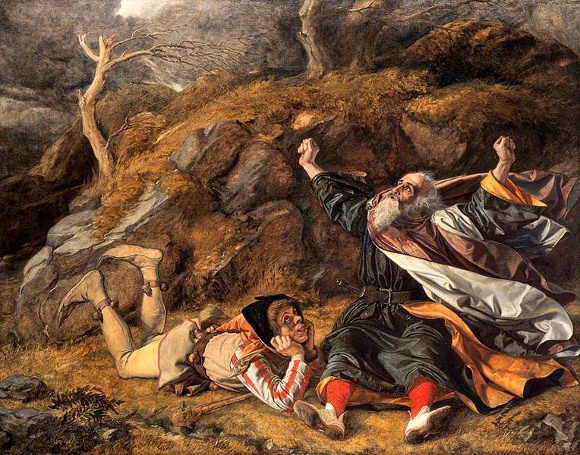Wuthering Heights Contents
Emily Brontë and the novel
The heritage of Gothic fiction
Gothic fiction emerged in the late eighteenth century as a sub-genre within the larger field of the novel. Horace Walpole’s The Castle of Otranto (1764) is usually regarded as the first Gothic novel:
- Gothic fiction is so called because it employed settings and/or plots that were associated with the medieval period, when the Gothic style of art and architecture developed
- The key terms are probably horror and terror
- It was usually set in a remote country with wild landscapes and in the past
- It described events that were often fantastic or supernatural and plots contained excess and extremes
- Themes often work as pairs of opposites (eg: good/evil, natural/unnatural)
- Its heroes and heroines were usually young women threatened by tyrants, rescued from their fate by determined and brave young men, usually acting alone against overwhelming odds
- In some Gothic novels, the heroine is responsible for her own fate and these books include some of the earliest strong female characters in English fiction
- The villains were usually powerful men: cruel and tyrannical aristocrats or corrupt priests
- The novels were set in castles or large houses full of dungeons and secret passages
- The atmosphere of the novels was gloomy and claustrophobic and the action often included physical and sexual violence
- The plots often revolved around issues concerning wills, inheritance and dynastic marriages often in a lawless setting
- Such novels were often seen as providing readers with a kind of thrill, a delight in being frightened that is perhaps similar to that derived from contemporary horror films
- Multiple narrators were common
- Jane Austen, who enjoyed reading Gothic novels, satirises them in Northanger Abbey (1818).
Elements of the Gothic in Wuthering Heights
Wuthering Heights contains too many other elements to be regarded as a fully Gothic novel, but it certainly uses a number of devices from the earlier form, for example:
- The setting at Wuthering Heights itself has some elements of the remote and mysterious houses of Gothic fiction
- The events of Chapter 3 are used to create tension and mystery in the same way as in Gothic novels
- There are elements of the ghostly and supernatural
- There are multiple narrators
It is not difficult to find other devices from the list above. These will be explored more fully in the sections on the text itself.
Other literary traditions found in Wuthering Heights
Romanticism
This artistic movement which started at the end of the eighteenth century is difficult to define precisely. However, it concerns a focus on the internal rather than the external, feeling rather than intellect, the natural rather than man-made, the exotic rather than the familiar, energy rather than restraint, and the importance of the bigger picture over the everyday. (Definition adapted from The Dictionary of Literary Terms, by J.R.Harmsworth, Coles, 1968). Philosophers such as Rousseau believed in the importance of the individual and the power of nature in developing the child.
Tragedy
Much of the plot of Wuthering Heights follows the pattern of a traditional tragedy:
- the downfall of a ‘hero’ initially through no fault of his own
- the way in which innocent people are drawn into the suffering
- the ‘hope for the future’ at the end.
 However, there is a more specific link to a particular tragedy: Shakespeare’s King Lear. It is reported that Emily Brontë was reading this play as she wrote Wuthering Heights. Specific mention is made of the play as early as Chapter 1 when Lockwood is trapped by the weather at Wuthering Heights.
However, there is a more specific link to a particular tragedy: Shakespeare’s King Lear. It is reported that Emily Brontë was reading this play as she wrote Wuthering Heights. Specific mention is made of the play as early as Chapter 1 when Lockwood is trapped by the weather at Wuthering Heights.
The two works share some themes: extreme violence, disputes in a family, sanity and insanity, for example. Other details are similar. Wild moorland is linked with strong emotions, and with conflict that eventually leads to peace and self-knowledge. Storms are used symbolically in both works, too. Both have a character called Edgar who is caught up in events beyond his ability to control. Interestingly, the two key locations in King Lear are a heath and a cliff!
Poetry
Although Emily Brontë wrote only the one novel, she also wrote a number of poems. These are worth looking up, as they deal with many of the same themes as Wuthering Heights. It is not hard, for example, to imagine that Heathcliff might be the narrator of Remembrance.
Recently Viewed
Scan and go
Scan on your mobile for direct link.